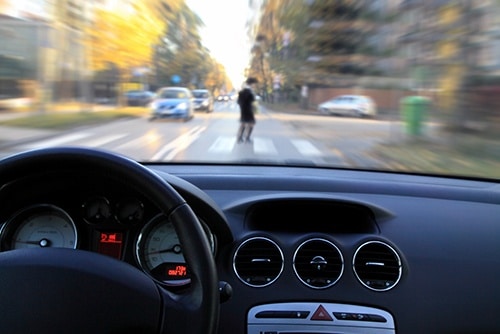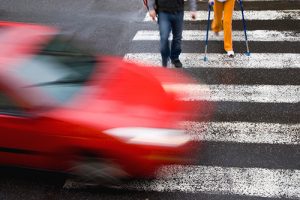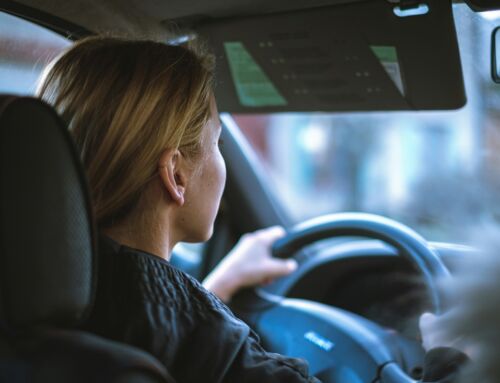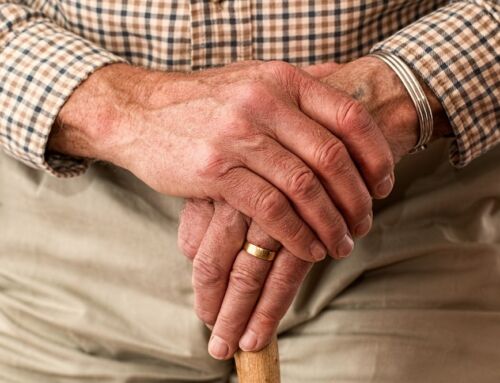Everyday hundreds of people are struck by a vehicle as they’re crossing the street or walking in it. Some in the crosswalk with the walk sign, others in it without the walk sign, and some outside of the crosswalk. Sometimes the vehicle who struck them stops and sometimes it drives off. The injuries sustained in these accidents are often horrific due to the difference in makeup and size of the human body versus that of a motor vehicle. Those injured are left wondering how they’re going to pay for the medical treatment necessary for them to recover from their injuries, how they’ll pay their bills if they can’t work, and if they’ll ever truly fully recover.
What Does Indiana Law Say About Pedestrians and Vehicles?
The law regarding pedestrians crossing or walking on the roadway in Indiana can be found in Indiana Code § 9-21-17 and its subchapters. Important portions of that chapter include:
- Crossing When at a Crosswalk:
- Pedestrians are subject to traffic and pedestrian control signals:
- When given a flashing or steady walk sign a pedestrian may proceed across the crosswalk and any vehicle must yield to them;
- When a flashing don’t walk sign is given a pedestrian may finish crossing if they’ve already begun doing so, but may not begin crossing;
- When a steady don’t walk sign is given a pedestrian may not start to cross the roadway, but may continue to a center island or the other side of the road when they’ve already begun their cross;
- If a countdown is show a pedestrian may cross if the pedestrian is able to fully cross before the steady don’t walk signal is shown;
- Vehicles:
- Must yield to pedestrians with the walk signal;
- May not pass another vehicle that is stopped at a crosswalk to permit a pedestrian to cross.
- Crossing When Not at A Crosswalk:
- Pedestrians not at a marked crosswalk shall yield the right-of-way to all vehicles upon the roadway;
- Pedestrians may not cross at any point other than a crosswalk where crosswalks are at adjacent intersections;
- Pedestrians may not suddenly leave a curb or other place of safety and walk or run into the pat of a vehicle that is so close as to constitute and immediate hazard.
- Walking on the Roadway
- When a sidewalk is available pedestrians may not walk on the roadway;
- When a sidewalk is not available pedestrians shall walk on a shoulder, as far as practicable from the edge of the roadway;
- All pedestrians on a roadway shall yield the right-of-way to all vehicles upon the roadway
- Pedestrians are subject to traffic and pedestrian control signals:
Additionally, case law in the state of Indiana provides the following additional information;
- Motorist turning right has a duty to anticipate that a pedestrian might be attempting to walk across the street, and it is the motorist’s duty to see and know whether there is a pedestrian in his/her path in broad daylight. Larkins v. Kohlmeyer, 98 N.E.2d 896 (Ind. Ct. App. 2016);
- A motorist’s duty to yield at an intersection not controlled by traffic signals is the same as his/her duty to yield when he has a green. Hendrix v. Harbelis, 230 N.E. 2d 315 (Ind. 1967);
- If a pedestrian crossing the street fails to exercise ordinary care for his/her own safety and proceeds heedlessly into known area of danger because of presence of automobiles, his claim is barred, even if the motorist was negligent to some degree. Kilmer v. Galbreth, 218 N.E.2d 361 (Ind. Ct. App. 1966);
Additional Considerations
The Indiana Comparative Fault Act allows fault to be portioned among all involved parties, including the Plaintiff. As long as the Plaintiff’s fault isn’t 51% or more, they’re able to be compensated proportionately to the Defendant’s or Defendants’ percentage of fault. For instance, if the jury decides the Plaintiff is entitled to $50,000.00, but is 20% at fault for their own injuries, the Plaintiff would receive $40,000.00 ($50,000.00 – ($50,000×20%) In pedestrian accidents this often comes into play and is certainly something to be considered when litigating pedestrian injury cases.
The Rescue Doctrine is an exception to the rules outlined above both in the Indiana statutes and caselaw. The rescue doctrine states that a person is not negligent for putting themselves in harms way in order to save a third person from harm. Wright v. Int’l Harvester Co., 528 N.E. 2d 837,841 (Ind. Ct. App. 1988). It also establishes liability for any party causing the “rescue” to be necessary. Star Transport, Inc. v. Byard, 891 N.E.2d 1099 (Ind. Ct. App. 2008). We recently handled a case where a woman struck a vehicle legally parked on the side of the road, causing her vehicle to overturn. Our client rushed out to help her and was struck by another vehicle. The insurance company for the first vehicle denied liability, claiming the liable party was the driver of the vehicle who struck our client. The insurance company for the second vehicle denied liability claiming our client violated the statute mentioned above that says a person can’t leave the sidewalk when there is an immediate hazard. We argued the rescue doctrine applied, which resulted in the first vehicle being liable do to its causing the “rescue” to be necessary and our client wasn’t negligent in being in the roadway because she was attempting to save a third person, the driver of the first vehicle, from harm. As a result we were able to settle the case favorably for our client.
So Who’s Fault Are These Accidents?
- Pedestrian walking in crosswalk with walk sign: The motorist who hits him is liable for the injuries to the pedestrian.
- Pedestrian walking in crosswalk with don’t walk sign: The pedestrian will likely share fault for his injuries and may have their claim barred if they failed to exercise due care for his/her own safety.
- Pedestrian Crossing street, not in a cross walk: Essentially the same as a pedestrian crossing with a don’t walk sign.
- Pedestrian walking on the road where there’s a sidewalk: Pedestrian is at usually mostly at fault for their injuries, but depending on the circumstances surrounding the accident the motorist may share some of the fault or even the majority of it.
- Pedestrian walking on the road where there isn’t a sidewalk: Motorist is mostly at fault for the injuries, but pedestrian may share some fault depending on the circumstance.
- Pedestrian who gets struck after running into the road to help driver of overturned vehicle after that vehicle hit a parked car: Both the driver of the overturned vehicle and the driver of the vehicle that struck the Plaintiff.
Who Pays for These Accidents?
If the motorist is at fault for the injuries, his/her liability insurance will pay for the damages suffered by the pedestrian including medical bills, lost wages, pain and suffering, and any other damages. The issue comes up when the motorist flees and is unable to be identified. In that case, if the pedestrian has uninsured motorist coverage it will most likely cover the damages, though it will depend on the exact language of their uninsured motorist policy. The same applies to underinsured motorist coverage when the motorist who strikes the pedestrian has less available insurance than the pedestrian.
Additionally, the pedestrian’s medical payments coverage may apply, though often insurance policies are written so that medical payments coverage only comes into play when the insured (pedestrian) is using or occupying their vehicle. If the policy does not include coverage for being struck as a pedestrian, medical payments coverage may not come into play.
What to do if You’re Struck by a Motor Vehicle
Get the medical treatment you need and then call the experienced pedestrian accident attorneys at the Hurst Limontes LLC. We have the knowledge and experience necessary to handle your claim properly, ensuring you receive fair compensation for your injuries.






